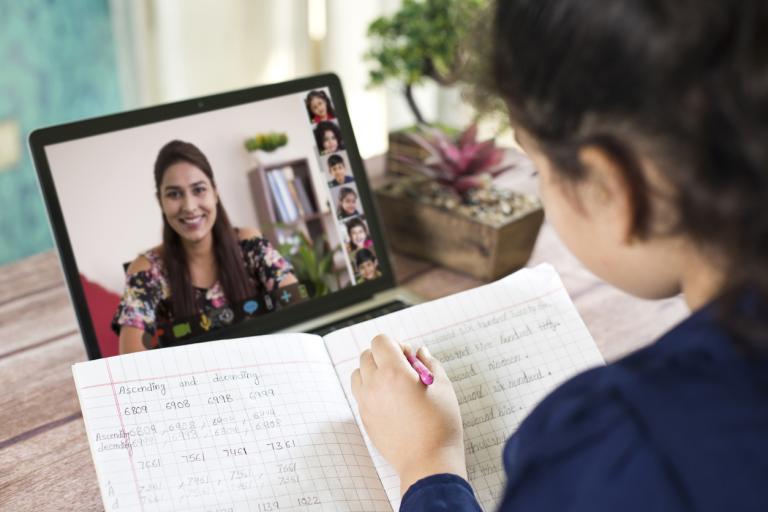As we prepare for an unprecedented school year, many parents are looking toward online school as a solution for their students. Others are still debating the pros and cons: is online learning effective? Can their students benefit from that style of learning, or will it set them back? There’s a consensus among many parents that online learning through the spring of 2020 was highly ineffective. It caused a wide range of problems and left many students with more difficulties than before. However, not all learning is equal. In order to decide whether online learning will work effectively for your student in the fall, make sure you’re asking the right questions.
1. Is It Engaging?
Just like reading rote material off of a page and answering the questions at the end of a chapter, with little other support, often fails to engage students, rote online learning that requires students to flip through a slideshow or passively absorb written information may be doomed to failure. This type of instruction simply cannot generate the engagement that many students need to be successful learners. Thanks to technological advances, however, online learning is not limited to these formats. Students can, in fact, be highly engaged through group assignments, interactive learning, and online platforms that provide them with more interesting material. Before deciding whether online learning will work for your student, determine whether the platform will offer engaging instructional opportunities.
2. Is Instruction Taking Place?
One of the biggest failures for online learning is that instruction often did not take place. All too many parents reported limited interactions with their students’ teachers. Teachers might have checked in on students only once or twice a week to make sure learning continued. Further, unless parents had the skills needed to help boost their students’ efforts, they might have fallen completely flat.
When instruction takes place, on the other hand, students can absorb it and continue to learn in spite of the distance between them in a classroom. Ideally, instruction should include small groups, one-on-one sessions, and lecture-style instruction just like students would find in a traditional classroom setting.
3. Are Students Receiving the Same Amount of Instruction and Teacher Interaction They Would in a Classroom?
In the average elementary school classroom, a large percentage of the school day is taken up with non-instructional time: time spent in the hallways, going over procedures, going to recess or lunch, or even waiting patiently for other students to finish an assignment. A large chunk of each day, however, is actively spent in instruction.
Do students receive that level of instruction in the online environment? If you want an effective online learning platform, you need an environment in which students receive a reasonable level of instructional.
4. Can Students Ask Questions?
If students cannot ask questions, they equally cannot effectively learn. They cannot share the problems they’re having, the challenges they must face, or the issues that arise along the way. Secondly, they can’t get clarification for an assignment. They can’t make sure that they understand before they get started.
The opportunity to ask questions–and to receive immediate feedback from the instructor–makes a big difference in the overall learning process. If your online learning platform does not offer the opportunity for students to ask questions, you could be preventing learning for your student.
Conclusion
Online learning looks very different from one district to the next. Not only that, but it also looks very different when teachers work to deliberately design an online learning platform. If you’re looking for a way to enhance your student’s learning or provide better opportunities for the 2020-2021 school year, contact us today to learn more about our online learning options and the benefits they can offer for your student.


